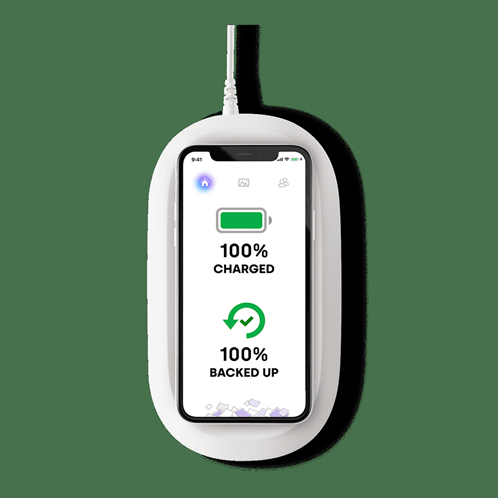자료실
[해외칼럼] 무선 충전 기술의 시작과 당면과제
- 작성일2022/09/02 18:02
- 조회 332
최근 무선 충전기는 스마트폰, TWS 이어버드, 스마트워치 등 점점 더 다양한 장치에 사용되고 있다. 무선 충전 기술은 자기 공명, 즉 유도 전력 전달의 원리에 따라 전원에서 장치로 에너지를 전달한다.
NXP Semiconductors의 부사장 겸 인도 담당 이사인 Sanjay Gupta에 따르면, "스마트폰은 오늘날의 디지털 라이프스타일의 중심이 되었으며, 소비자들은 이동 중에 정보 액세스, 온라인 구매, 친구 및 가족들과의 연락, 필요할 때 응급서비스를 이용하기 위해 이동중에 기기가 충전되는 것을 필요로 한다" 고 언급했다.
제조업체별 무선 충전기
애플은 2006년에 MagSafe 무선 충전기를 판매한 최초의 회사이다. MagSafe는 2009년 단종되었다가 2021년 10월 아이폰13부터 재도입되었다. 잠깐 단종되었던 정확한 이유는 알 수 없지만 절연과 과열 문제였던 것으로 추측한다.
애플의 국내 경쟁업체인 삼성도 무선충전기를 개발했다. 삼성의 무선 충전 패드는 두 장치를 한 번에 충전이 가능하다. 15W 충전기에는 스마트폰, 이어버드 또는 스마트워치를 충전할 수 있다.
중국의 스마트폰 제조업체인 원플러스는 스마트폰 무선 충전이 가능한 스탠드를 만들었다. 이 기기는 29분 만에 1%에서 50%까지 충전할 수 있다. 또한 Qi/EPP 호환으로 다른 브랜드 스마트폰도 충전할 수 있다.
또 다른 중국 스마트폰 제조업체인 샤오미는 30W와 50W 무선 충전대를 만들었다. 50W 충전 속도는 현재 업계에서 가장 빠른 무선 충전 속도이다. 샤오미는 지난해 케이블이나 무선 충전대 없이 여러 대의 스마트폰을 동시에 원격으로 충전할 수 있는 기술을 선보였다. 충전 더미는 스마트폰의 위치를 감지해 밀리미터 폭의 파장을 스마트폰으로 전송할 수 있다. 스마트폰의 비콘 안테나는 위치 정보를 방송하고 수신 안테나는 밀리미터파 신호를 전기에너지로 변환해 스마트폰을 충전한다.
샌디스크는 Qi 호환 스마트폰용 고속 무선 충전을 지원하는 10W 충전기를 판매한다. 또한 휴대폰이 충전될 때마다 충전기에 자동으로 풀 해상도의 사진과 동영상 백업도 가능하며 이 기능으로 데이터가 충전기에 백업되어 스마트폰의 데이터 저장 공간을 확보할 수 있다고 한다.
무선 충전 기술 당면 과제
샤오미 인도 최고마케팅책임자 아누지 샤르마는 "무선 충전 기술이 유선 충전기만큼 빠르지 않기 때문에 충전 시간과 생산량이 시간 및 최대 출력이 가장 큰 과제"라고 이야기한다.
일반적인 중급 이상의 스마트폰은 평균적으로 약 33W의 출력이 제공되는데, 무선 충전에 활용되는 평균 전력 출력은 10-20W 정도 낮은 편이다. 또한 무선 충전기는 유선 충전기보다 구매 비용도 비싸다.
일부 전문가들은 무선 충전 시스템이 비효율적인 설계로 인해 극심한 온도 변동을 일으켜 성능에 영향을 미쳐 작동이 안될 정도의 치명적인 손상을 초래할 수 있다고 언급하며 무선충전 기술 설계의 한계점을 언급하며 우려를 표명했다.
워릭 대학의 연구 보고서는 유도 충전은 리튬이온 배터리로 구동되는 휴대폰을 고갈시킬 수 있다고 밝혔다. 하지만 무선 충전기 제조업체들은 무선 충전이 아주 안전하며 제품 배터리 수명에는 영향을 미치지 않는다고 반박하는 추세이다.
미국심장협회(AHA)는 애플의 MagSafe 기술이 적용된 기기가 심장박동기와 같은 심장기기에 가까이 닿았을 때 임상적으로 상당한 상호작용을 일으킬 수 있다는 사실을 발견했다. MagSafe는 50가우스 이상의 자기장 강도를 생성할 수 있는데, AHA는 "애플의 아이폰12 프로맥스 MagSafe 기술은 심장 이식형 전자기기(CIED)에 자기 간섭을 일으킬 수 있으며 생명구조 요법을 억제할 수 있는 문제점을 가지고 있다"고 말했다.
사람들은 종종 스마트폰을 CIED에 가까이 있을 수 있는 가슴 주머니에 휴대폰을 넣는 경향이 있다. AHA에 따르면, 이러한 행동은 비동기적인 페이스로 진행되거나 생명을 구하는 치료법을 무력화시킬 수 있어 주의가 필요하다.
[칼럼 원문] 작성자: Abhishek Chatterjee, 출처 : A look at wireless charging tech’s fledgling start and challenges it faces - The Hindu

A look at wireless charging tech’s fledgling start and challenges it faces
Apple is one of the first few companies that experimented with wireless chargers with its MagSafe device in 2006
Wireless chargers are increasingly powering smartphones, TWS earbuds, smartwatches, and several other consumer electronic devices. Wire-free charging tech transmits energy from a power source to device on the principle of magnetic resonance, or simply put, inductive power transfer.
Smartphones have become the centre of today’s digital lifestyle, and consumers want their devices to be charged on the go to access information, make purchases, maintain contact with friends and family and tap emergency services when needed, according to Sanjay Gupta, VP and India Managing Director at NXP Semiconductors.
Companies and chargers
Several companies are developing wireless charging technologies. Apple is one of the first few companies that experimented with wireless chargers with its MagSafe device in 2006. It discontinued the chargers in 2019, and then re-introduced them in October 2021 for its new line of iPhone models. The Cupertino-based company never stated the reason for discontinuing the technology three years ago. But it did receive complaints from several users on insulation and overheating issues.
The Silicon Valley company’s competitor in South Korea has also developed wireless chargers. Samsung’s wireless charging pads can power up two devices in one go. The 15W charger can charge a phone, earbuds or smartwatch. And then, Shenzhen, China-based mobile manufacturer OnePlus has built a stand to power its smartphones. This device can charge a phone from 1% to 50% in 29 minutes. It can also charge other brand smartphones that are Qi/EPP compatible. Qi/EPP is the worlwide standard for wireless charging technology .
Another Chinese handset maker Xiaomi makes 30W and 50W wireless charging stands to charge phones. And companies flagship phone is said to offer one of the fastest wireless charging speed in the industry at 50W. Last year, Mi introduced a tech that enables users to remotely charge multiple smartphones at the same time without any cables or wireless charging stands.
The charging pile can accurately detect a smartphone’s location and transmit millimeter-wide waves to the phone. The beacon antenna in the smartphone broadcasts position information and the receiving antenna converts the millimeter wave signal into electric energy that charges the phone.
In another category of devices, flash memory driver maker SanDisk sells 10W charger that supports fast wireless charging for Qi-compatible smartphones. It can also automatically backup photos and videos in full resolution right onto the charger, every time the phone is charged. This feature is said to free up data storage on phones as the data is backed up on the chargers.
Challenges facing wireless charging tech
Charging time and output are the biggest challenges for wireless charging tech remains around the time and maximum output as they are not as fast as the wired chargers, according to Xiaomi India’s chief marketing officer Anuj Sharma.
The average power output for wireless charging is 10-20W. And most android devices powered by regular chargers provide about 33W output for smartphones in the mid-range and above. Additionally, wireless chargers are more expensive compared to wire based chargers as the adoption for the technology is yet to pick up.
Some experts have expressed concern over charging tech’s design, noting that inefficient design could cause extreme temperature fluctuations in the wireless charging system. This in turn could affect its performance, causing inoperable damage. Other have also pointed out the tech’s negative impact on smartphone batteries. A research report by University of Warwick revealed use of inductive charging could drain mobile phones powered by lithium-ion batteries.
Charger makers refute these issues, saying wireless charging is completely safe and that it does not impact the battery life of products.
In a separate use case, researchers have identified some wireless chargers to be affecting the functioning of pacemakers. The American Heart Association (AHA) found that devices with Apple’s MagSafe technology can cause clinically significant interference in cardiac devices like pacemakers when they are placed close to these devices or on the skin.
MagSafe can generate magnetic field strength of more than 50 gauss. “Apple’s iPhone 12 Pro Max MagSafe technology can cause magnetic interference on cardiac implantable electronic devices (CIEDs) and has the potential to inhibit life-saving therapy,” AHA said.
People often put their smartphones in a breast pocket which can be in close proximity to CIEDs. This can lead to asynchronous pacing or disabling of life saving therapies, according to the AHA.







